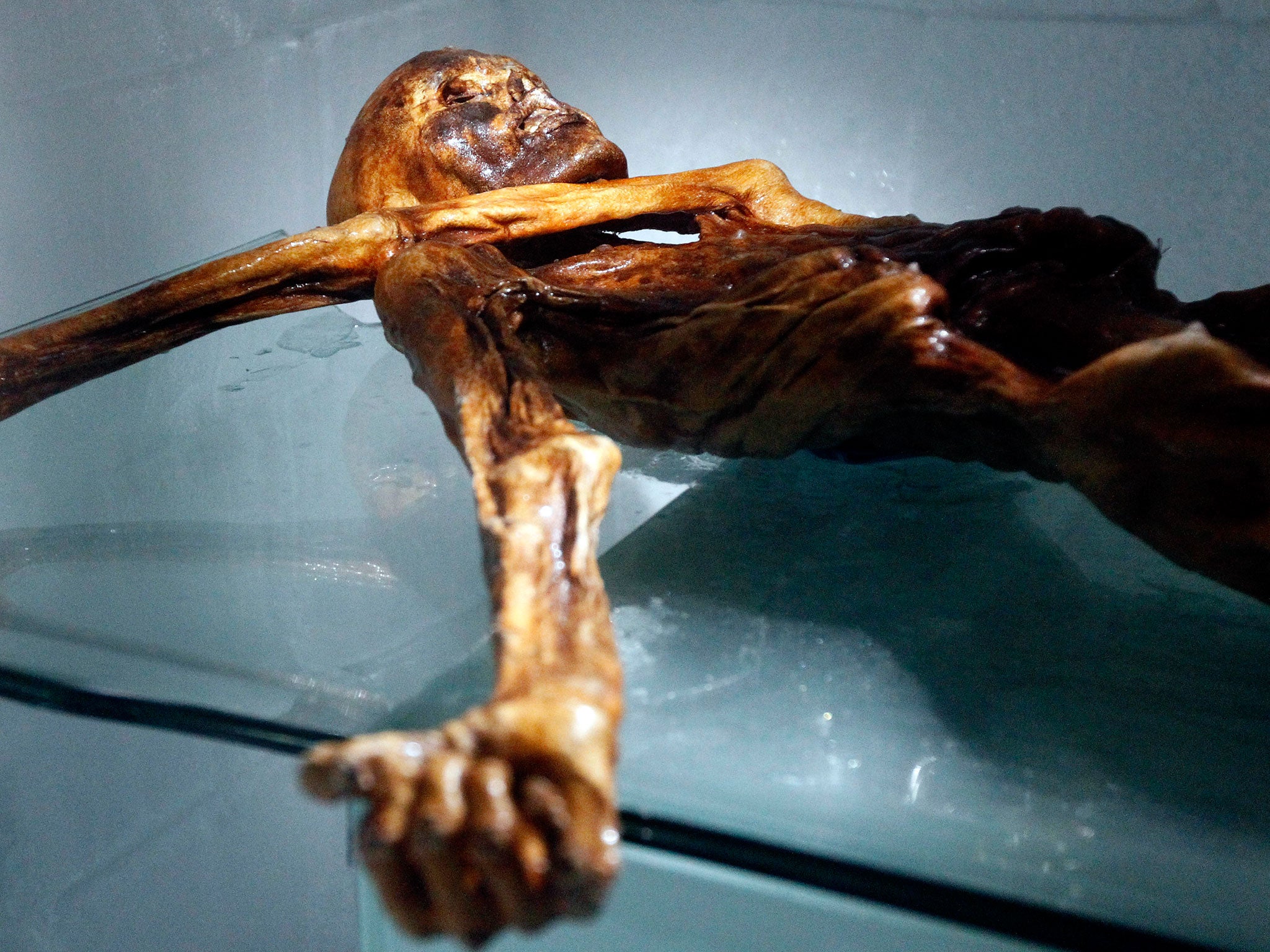Prehistoric 'Iceman Otzi' may have had stomach ulcers, study finds
Scientists are investigating the body of the copper-age man who remained buried in a glacier for more than 5,300 years

Your support helps us to tell the story
From reproductive rights to climate change to Big Tech, The Independent is on the ground when the story is developing. Whether it's investigating the financials of Elon Musk's pro-Trump PAC or producing our latest documentary, 'The A Word', which shines a light on the American women fighting for reproductive rights, we know how important it is to parse out the facts from the messaging.
At such a critical moment in US history, we need reporters on the ground. Your donation allows us to keep sending journalists to speak to both sides of the story.
The Independent is trusted by Americans across the entire political spectrum. And unlike many other quality news outlets, we choose not to lock Americans out of our reporting and analysis with paywalls. We believe quality journalism should be available to everyone, paid for by those who can afford it.
Your support makes all the difference.A prehistoric “iceman” whose frozen corpse was buried in an Alpine glacier for more than 5,300 years before being discovered in 1991 suffered a stomach infection that might have given him ulcers, a study has found.
Scientists investigating the mummified body of “Otzi”, the copper-age man frozen in ice, have found remains of Helicobacter pylori in his stomach contents, a bacterium known to cause ulcers today. Otzi derives his name from the local Otztal Alps.
The findings support the theory that the stomach bug has been infecting humans for many thousands of years. However, its presence came as a surprise to the scientists who made the discovery.
“Evidence for the presence of the bacterium Helicobacter pylori is found in the stomach tissue of patients today, so we thought it was extremely unlikely that we would find anything because Ötzi's stomach mucosa [lining] is no longer there,” said Albert Zink, a palaeopathologist at the European Academy of Bozen-Bolzano in Italy.
The scientists solved the problem by extracting the entire DNA of the stomach contents and then searched for the presence of the DNA specific of the bacterium. This enabled the researchers to reconstruct the whole 5,300-year-old genome of the stomach bug.
“Whether Ötzi suffered from stomach problems cannot be said with any degree of certainty because his stomach tissue has not survived and it is in this tissue that such diseases can be discerned first. Nonetheless, the preconditions for such a disease did in fact exist in Ötzi,” Dr Zink said.
An analysis of the bacterial genome suggests it derives from an Asian strain rather than the North African strain commonly seen in modern-day Europeans. It is thought that the strains of the stomach bug evolve with human migrations, which indicates that the Iceman may be descended from Asian ancestors.
Many artefacts were discovered alongside the heavily tattoed corpse of Otzi. These included a copper-headed axe, a flint-bladed knife and two broken arrows held in a quiver. His clothing included bear and deer-skin shoes lined with grass and a sophisticated cloak made of woven grass and a coat, leggings, loincloth and belt – all made of leather.
Join our commenting forum
Join thought-provoking conversations, follow other Independent readers and see their replies
Comments